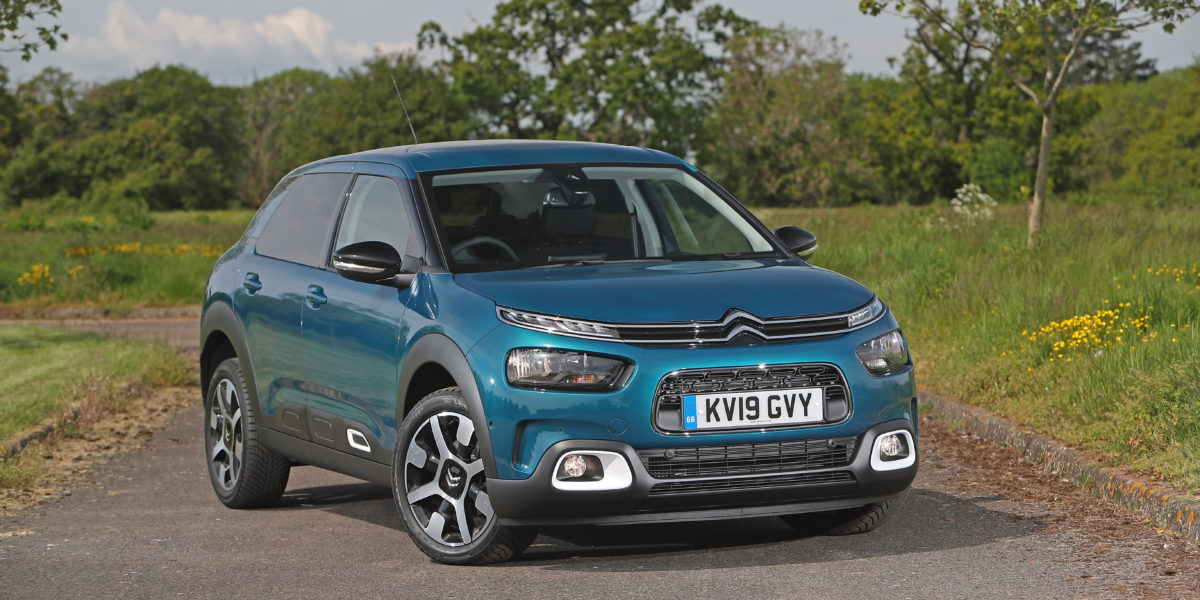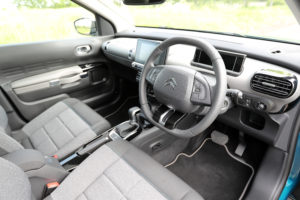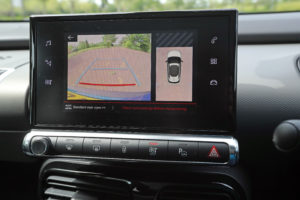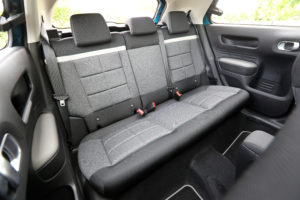
The specs
| Model tested: | Citroen C4 Cactus BlueHDi 120 Flair auto |
|---|---|
| Price: | £23,335 |
| Engine: | 1499cc |
| Power: | 119bhp@3750rpm |
| Transmission: | 6-speed auto |
| 0-62mph: | 8.7 seconds |
| Top speed: | 125mph |
| Economy / CO2: | 70.6mpg/102g/km |
| Insurance: | 22 |
Review: Citroen C4 Cactus (Overall score 3.5/5)
Citroen celebrates its centenary this year and, having created some of the world’s most distinctive and iconic cars, it went off the boil for a while, churning out me-too designs. But the French company rediscovered its mojo a few years ago and it now has one of the most eye-catching model ranges on the new-car market. The C4 Cactus is a case in point with its sharp-looking nose and SUV looks, even though it’s really just a small family hatch.
Cabin (3.5/5)
If you’re a fan of minimalism, you’ll love the Cactus’s cabin, which in some ways resembles an old-fashioned sitting room, with its flat sofa-like seats that look like they’re trimmed in tweed, and leather pull straps for the doors. Those seats aren’t supportive enough and it’s the same in the back, where leg room is ample, but head room is tight because of the glass roof. There’s the bare minimum of instrumentation; just a digital speedometer, odometer, a fuel gauge and (on our auto at least), the current gear.
There’s no temperature gauge or rev counter, but do your pupils need these? The centre of the dash is dominated by a touch-screen which controls everything; select reverse and a split display shows the view behind and an around view, which is really useful.
Cubby hole space is pretty average and so are the materials used, but clever design means that your eyes aren’t drawn to this. Incidentally, the rear side windows pop open rather than wind down, in an attempt to reduce complexity and weight.
Driving (3.5/5)
There’s a choice of 1.2-litre Puretech petrol or 1.5-litre BlueHDi diesel engines, both turbocharged. The former comes in 109bhp or 128bhp forms, while the latter is offered with 99bhp (manual gearbox only) or 119bhp (auto only). The low-powered petrol engine also comes in auto form and this EAT6 transmission is a torque converter unit, as opposed to the terrible EGC transmissions that Citroen used until recently. Indeed, while it’s not as slick as a dual-clutch gearbox, the auto box goes nicely with the torquey diesel engine, which runs out of puff a bit too soon. This isn’t a problem, unless you’re overtaking in a hurry. The soft suspension provides a reasonably supple ride, but spoilt a little by the big (17-inch) wheels. The trade-off is quite a bit of roll in the bends. The controls are all well weighted though, and the tight turning circle gives the Cactus admirable agility.
Costs (3.5/5)
There are just two trim levels to choose between: Feel and Flair. Both come with alloy wheels, a seven-inch touch-screen, DAB radio, Bluetooth, air-con, rear parking sensors, a space saver spare wheel, cruise control and powered front windows. The Flair adds privacy glass, electric folding door mirrors, navigation, climate control, a panoramic glass roof, reversing camera and extra driver aids.
Our range-topping diesel auto is costly at over £23k, but the range starts at £19,070 for the Puretech 110 in Feel trim; the BlueHDi 100 Feel costs £800 more. While the entry-level engine is all you need performance-wise (and economy is good at an official 48mpg), we’d opt for Flair trim as most of the extra kit that this brings is worthwhile. So, for us, the sweet spot in the range is the Puretech 110 Flair at £20,970.





